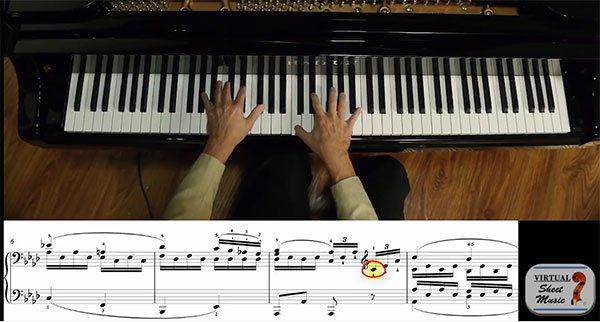Today we are going to discuss a very important topic, the essentials of fingering on the piano. We are going to use a couple of pieces as an example so you will benefit from watching the accompanying video.
Fingering on the piano is one of the most important aspects for developing a good technique. One of the greatest challenges is figuring out the best fingering for individual pieces. Even with scores that include fingering, you will rarely have all of the fingering written down except in very rudimentary music. Fingering is indicated as suggestions for key sections of the music. In fact, different editions of the same pieces have different fingerings! The fingering you play for a certain piece might not be the same as someone else. You must find a good fingering that works for you.
Fingering is the foundation of good piano playing. When you hit a wall in your practice after trying many techniques such as – slow practice, metronome work, hands separately, and other techniques, you should consider re-examining your fingering and see if there is a solution that works for you. Many times you will be able to solve your technical problems by discovering a new fingering.
Years ago I made a video that breaks down all piano playing into two essential components:
Fingering Patterns and Hand Positions
To sum up the idea behind that lesson, you should try to break down your music to chords wherever possible. By doing this you will be able to take in as many notes as you can in a hand position so you don’t have to jump around more than necessary.
The first piece I use in the video is Bach’s Prelude in C major from the Well-Tempered Clavier Book I. I picked this piece because it is simply a series a broken chords – which makes it easy to demonstrate this lesson.

When you approach this piece, try playing block chords first instead of playing as written. It looks like this:

By grabbing as many notes as you can, it makes the piece much easier to learn and makes fingering choices obvious.
The trouble begins when you have to change hand positions.
For example, in the second movement of the Pathetique Sonata by Beethoven, when the first theme finishes, it repeats an octave higher. How do you approach this with the chord technique?

You see in the highlighted section that the piece goes up an octave. There is a technique for handling sections like this when you’re breaking down into chords. You figure out a “pivot note” to switch to a new hand position that gets over the new chord. Typically it’s a third or fourth finger crossing or as in this case, a thumb crossing. This instantly puts you in a new hand position!

Notice the position of my hands, as soon as I hit middle C, I am over the next chord.
By using this technique of identifying pivot notes to switch hand positions, it will guide your fingering choices.
Thanks again for joining us here at Living Pianos. If you have any questions about this topic or any others, please contact us at: Info@LivingPianos.com (949) 244-3729


